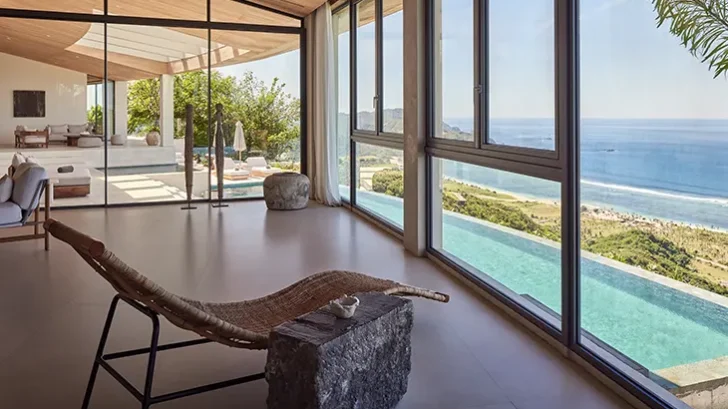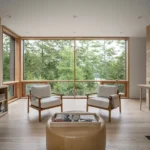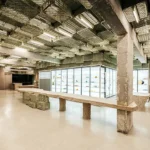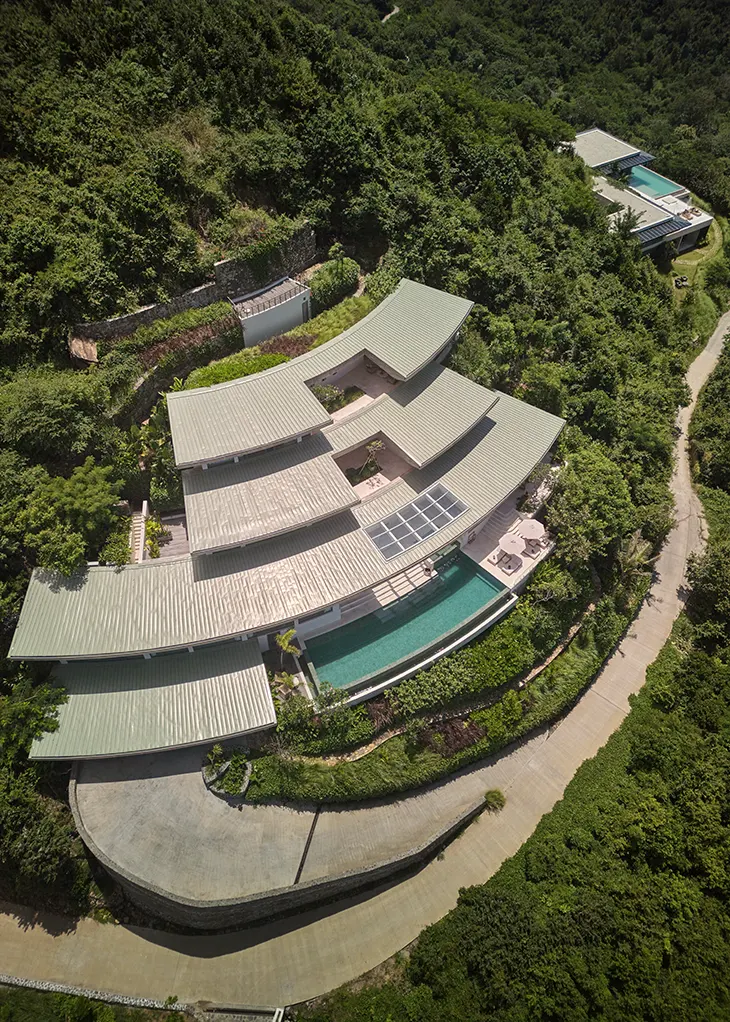
Perched atop the dramatic slopes of Tampah Hills in Lombok, Villa Boë by Alexis Dornier redefines the idea of a contemporary tropical retreat. Completed in 2024, the 1,151-square-meter residence occupies one of the highest and steepest sites within the development, a terrain so commanding that it shaped every aspect of the architecture. The result is a vertical composition, merging structure and topography into one continuous form.
HOUSING
The design follows the contours of the hillside through a series of layered platforms. At the base lie the garage and main entrance, discreetly embedded in the terrain. Above this level, the house opens to expansive communal spaces, the kitchen, living, and dining area, which unfold through steps and split levels that naturally guide movement upward. Higher still, two distinct sleeping wings accommodate families in private, self-contained quarters. At the summit, a circular yoga and contemplation platform crowns the structure, offering panoramic views across the surrounding hills and the Indian Ocean beyond.
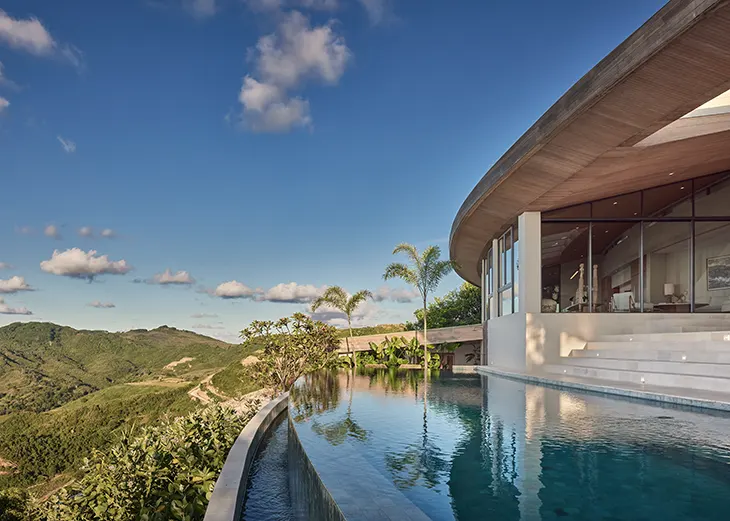
The architecture revolves around a system of concentric circles and radial lines, responding directly to the site’s topography. This geometric framework defines the way roofs tilt, volumes interlock, and views are framed. Rather than stacking volumes, the building terraces along the slope, creating a sense of flow and balance between built form and landscape. It is both sculptural and serene, a form that engages the land rather than competing with it.
Material restraint underscores the project’s elegance. Teak wood ceilings and soffits, off-white plaster walls, and white Palimanan stone floors establish a quiet palette that harmonizes with Lombok’s natural tones. The pool extends this dialogue, flowing through the house as part of a living topography rather than an isolated feature. These details create an architecture that feels immediate yet enduring, rooted in the climate, responsive to light, and inherently local in spirit.
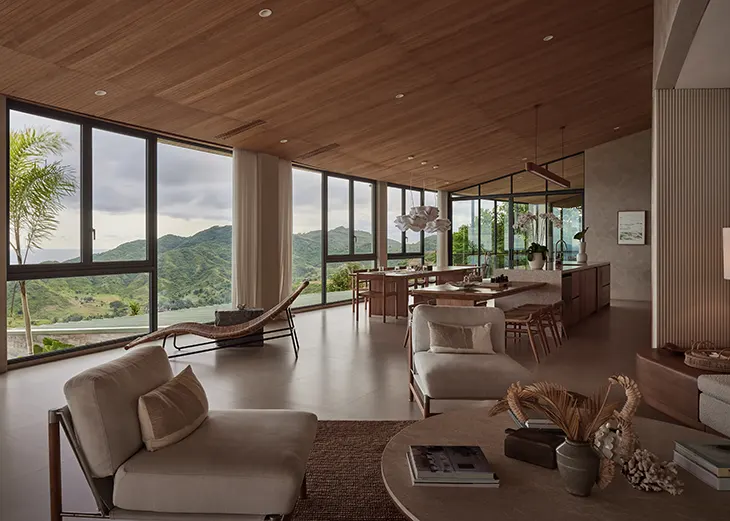
While unmistakably contemporary, Villa Boë hints at the mid-century architectural ethos of figures like John Lautner, where bold structural gestures coexist with environmental sensitivity. Dornier’s interpretation focuses not on nostalgia but on a renewed dialogue between landscape and design, where architecture becomes a lens through which nature is experienced.
Villa Boë stands as both a landmark and a meditation on balance: expressive yet restrained, prominent yet peaceful. Each line and surface is intentional, forming a composition that honors the land while inviting those within it to pause, look outward, and breathe.
